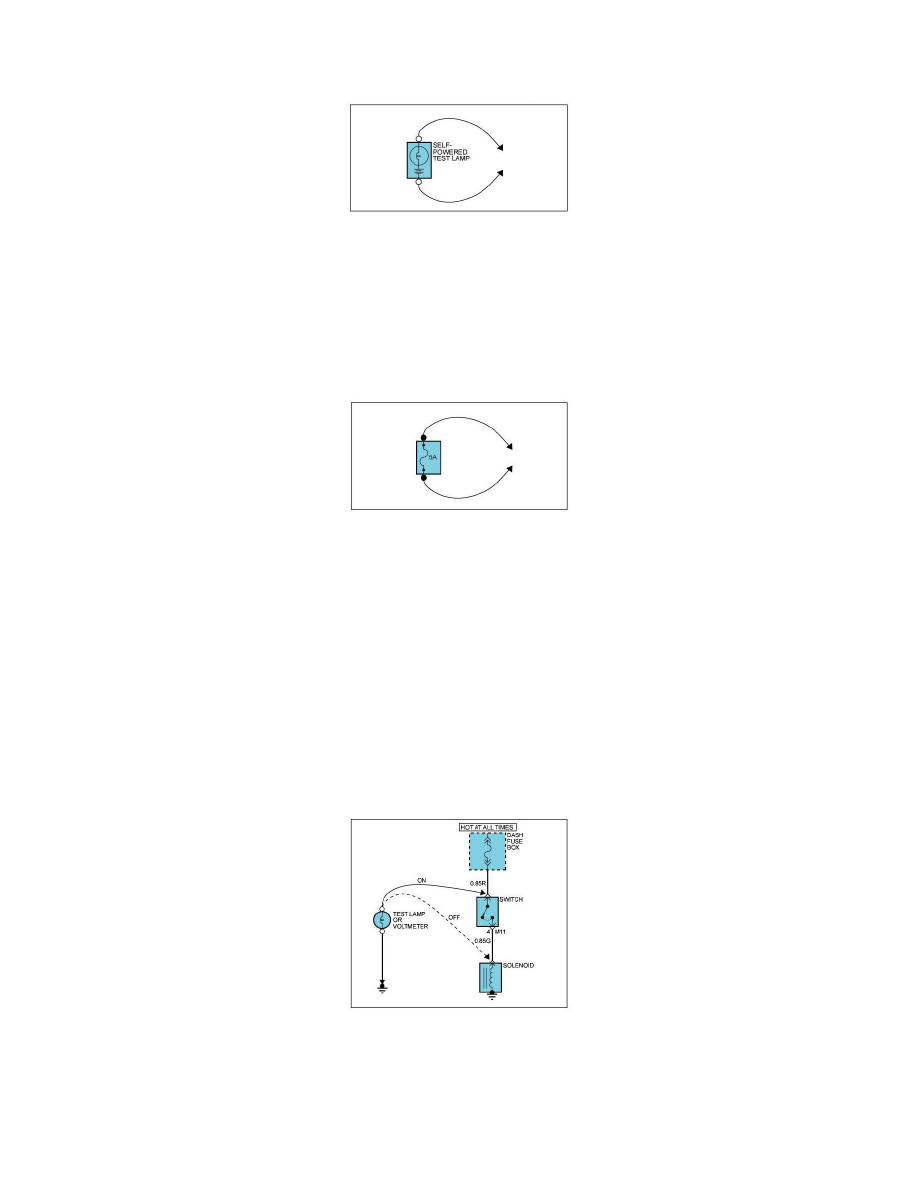Borrego 2WD V6-3.8L (2009)

there may be incorrect readings. Diodes and solid-state devices in a circuit can make an ohmmeter give a false reading.
To find out if a component is affecting a measurement, take one reading, reverse the leads and take a second reading.
If different the solid-state device is affecting the measurement.
JUMPER WIRE WITH FUSE
Use a jumper wire with a fuse to by-pass an open circuit.
A jumper wire is made up of an in-line fuse holder connected to a set of test leads. This tool is available with small clamp connectors providing adaption
to most connectors without damage.
CAUTION: Do not use a fuse with a higher rating than the specified fuse that protects the circuit being tested. Do not use this tool in any
situation to substitute an input or output at the solid-state control module, such as ECM, TCM, etc.
SHORT FINDER
A short finder is available to locate a short to ground. The short finder creates a pulsing magnetic field in the shorted circuit and shows you the location
of the short through body trim or sheet metal.
TROUBLESHOOTING TEST
1. TESTING FOR VOLTAGE
This test measures voltage in a circuit. When testing for voltage at a connector, you do not have to separate the two halves of the connector.
Instead, probe the connector from the back(backprobe, or use a suitable T-connector). Always check both sides of the connector because dirt and
corrosion between its contact surfaces can cause electrical problems.
A. Connect one lead of a test lamp or voltmeter to a ground. If you are using a voltmeter, be sure it is the voltmeter's negative test lead you have
connected to ground.
B. Connect the other lead of the test lamp or voltmeter to a selected test point (connector or terminal).
C. If the test lamp glows, there is voltage present. If you are using a voltmeter, note the voltage reading. A loss of more than 1 volt from
specification indicates a problem.
2. TESTING FOR CONTINUITY
A. Disconnect the battery negative terminal.
B. Connect one lead of a self-powered test lamp or ohmmeter to one end of the part of the circuit you wish to lest. If you are using an ohmmeter,
hold the leads together and adjust the ohmmeter to read zero ohms.
C. Connect the other lead to the other end.
D. If the self-power test lamp glows, there is continuity. If you are using an ohmmeter, low or zero resistance means good continuity.
